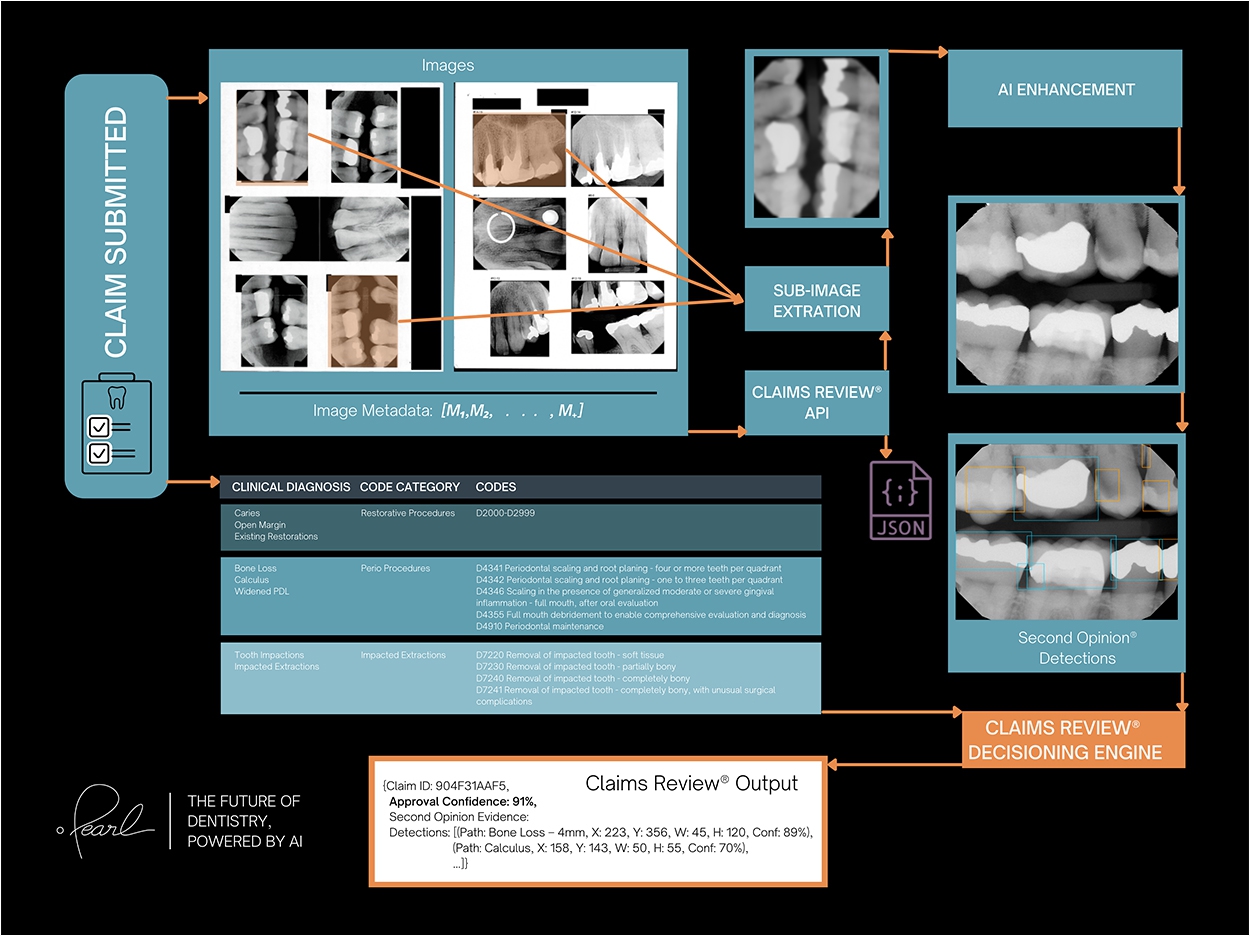
The United States Patent Office has issued US Patent No. 10,937,108, “Computer Vision-Based Claims Processing,” to Pearl. The patent covers the novel computer vision technology underpinning the company’s Claims Review and Pearl Protect solutions for automating dental insurance claims adjudication, Pearl said.
This is the second patent recently awarded to Pearl for machine learning innovations developed to eliminate waste and improve productivity within essential dental industry processes, the company said.
The dental insurance industry’s core cost management apparatus, utilization management, also is its largest cost center, Pearl said. Despite prodigious investment in claim adjudication infrastructure and headcount, insurance carriers succeed in reviewing fewer than 10% of the billion-plus dental insurance claims, amounting to $85 billion in industry-wide payouts, submitted annually in the United States, according to the company.
To maximize the impact of claim adjudication resources, carriers focus almost exclusively on high-value claims, or those requiring radiographic evidence of treatment need, Pearl said. Still, the company added, the teams of accredited clinicians that carriers employ as claims examiners are capable of evaluating only a tiny sample of radiograph-supported claims.
The claims they review are selected on the basis of cost alone, Pearl said, without any governing logic to identify claims with higher likelihood of dental or to increase claims routing efficiency, Pearl said, When claims are denied, the company added, the subjectivity of examiners’ findings offers little transparency into the rationale for denial.
And because dental examiners are as prone to human diagnostic inconsistency as practitioners are, Pearl said, a certain portion of claims are denied in error. Whether they are incomplete, labor-intensive, nontransparent, or imperfect, the company said, dental insurers have been obliged to accept these deficiencies in the utilization management enterprise until recently.
Last year, Pearl introduced Claims Review and Pearl Protect to solve carriers’ claims adjudication woes, the company said. These products are built around a pioneering technological process: the application of computer vision machine learning algorithms to automatically validate insurance claims based on radiographic claims evidence.
The latest patent grants Pearl an expansive and exclusive license to apply computer vision algorithms for this purpose, the company said.
“We’ve given carriers the ability to process claims in seconds and, because a carrier’s unique decision-making matrix is defined in the system, its decisioning is totally transparent,” said Pearl CEO Ophir Tanz.
“The carrier plugs the software in and instantly goes from reviewing a tiny fraction of radiographic-supported claims to programmatically reviewing every claim. Their adjudicators go from wasting time on claims destined for approval to focusing only on questionable claims where their expertise is most useful,” said Tanz.
The patented technology automates claims processing using a range of machine learning models to diagnostically assess radiographic claim evidence, then cross-references the diagnostic findings with the claimed treatment codes, Pearl said.
If the artificial intelligence (AI) diagnosis accords with a carrier-approved treatment, Pearl said, the claim is automatically accepted. If not, the claim is routed to a human claims examiner for manual review.
“From the carrier’s perspective, this technology is extremely simple to integrate and put to work, but under the hood it its complex,” said Pearl CTO Cambron Carter.
“Before a claim reaches our decisioning engine, the radiographs run a machine learning gauntlet where fingerprinting and image recognition models mitigate malicious behavior like radiograph doctoring, GANs intelligently correct image quality, segmentation models, and detectors conduct anatomical orientation and diagnosis,” Carter said.
“Then all findings are combined using clinically informed heuristics to measure the severity of conditions like decay, bone loss, caries, et cetera. This all happens in the blink of an eye. But when you understand everything that’s going on in that blink, you can understand why, as a team, we’re particularly proud to receive this patent,” Carter said.
Echoing those sentiments, Tanz added that the company’s recent patent successes signal Pearl as the predominant innovator and trusted partner in the dental AI ecosystem.
“AI adoption is approaching an inflection point in the dental industry. We expect all dental insurance carriers to be powering their claims review with AI within the next five years, and when that happens, it will be thanks to a technology that Pearl introduced,” Tanz said.
Related Articles
Pearl Gets US Patent for AI Restoration Technology
Dental AI Council Looking for New Members
AI and Dentistry: Envisioning the Dental Clinics of the Future—and Today












